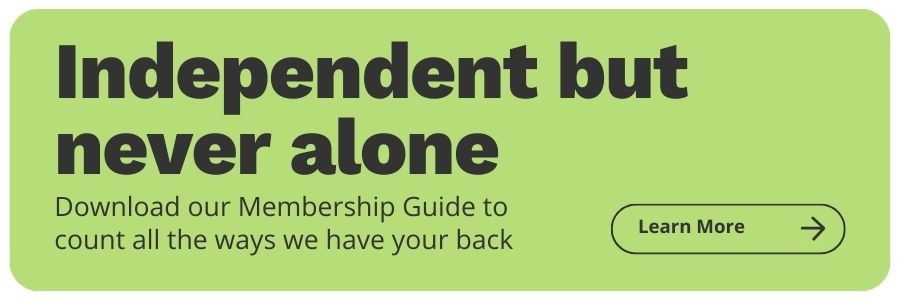Hiring 101: Everything You Need to Know
Share this
No matter if you are looking to expand your team or need to replace a position due to turnover, hiring in today’s labor market can easily make one feel a little uneasy. New expectations regarding the workplace and its benefits make finding and retaining talent a full-time job in and of itself.
While there is no bulletproof solution to the new area of recruitment, there are key tips and best practices that can help you make a new hire. Let this blog serve as your guide.
#1: Create a Job Description
Hiring starts with a simple question: What are we hiring for? Even if we are “just” looking for a replacement for an established position, it is always worthwhile to read through the job description and see if any updates are needed. If we are looking to hire a new position, really ask yourself what “gap” in skills, knowledge, and abilities needs to be filled. You may be aware that — because of the tight labor market — many employers are doing away with certain qualifications and requirements. This is especially true of educational benchmarks. For example, hiring a front-desk receptionist doesn’t necessarily mean they need to come with a business degree, right? Be mindful of what the candidate really needs to bring to the job in order to be successful.
Secondly, don’t fall into the trap of assuming a job description and a job advertisement are one and the same. They are two entirely different things. A job description is a listing of all responsibilities for the position, and it should give a comprehensive summary of physical requirements and essential job duties. A job advertisement on the other hand is used to market the best aspects of the position to “sell” job seekers on the opportunity, and it should only highlight the most important duties. Nobody wants to read through 20 bullet points, including “other duties as assigned.” You should talk to applicants about their duties throughout the interview process, and supply the job description during the final stages of the selection process.
And lastly, ensure that the responsibilities and the pay for the position are in alignment. The Bureau of Labor Statistics can give you an idea about wages for certain titles. However, be aware that in times of high inflation and frequent wage increases, that data might lag behind. A look on indeed.com for your area can also give you some idea of what the pay scales are looking like locally. All in all, if you notice that you are not attracting applicants with the qualifications you are looking for, it is time to go back to the drawing board and look at the job description and its corresponding advertisement. Chances are you are not capturing the position details to attract the applicants you are looking for. If you get applicants initially, but cannot come to terms on salary, you are either not paying enough for the position, or the description and/or title of the position are not in line with industry standards.
Need more tips for writing an effective job description? Check out this blog.
#2: Determine how you will source your applications
When was the last time you applied for a job? When was the last time you interviewed?
The playing fields are always changing. Many applicants are looking to apply via “one-click” on LinkedIn, or to apply directly from another job portal that they already use. Be aware that the type of job you are trying to advertise will influence your sourcing.
What is sourcing? Well, that would be the art of attracting talent to your job advertisement. Depending on the complexity of the position, sourcing can be very easy, or it can take months to get the right applicants to apply.
Usually, entry-level positions in this space are “easier” to source, assuming the pay is adequate. Posting the position on indeed.com usually does the trick. Building a pipeline through internship programs with local universities can be a good tool as well to keep a healthy pool of entry-level applicants.
However, the BEST sourcing method is free: employee referrals. An employee referral program can produce even better results, with a great ROI. With the labor market being as tight as it is, you are usually recruiting from a labor force that is already engaged, i.e., working for a different employer. For this segment of the labor force to apply, it is always helpful if the employer comes with a recommendation from a friend. It establishes trust in your company, introduces your employer brand, and encourages a change.
Application considerations:
Barriers-to-entry
Therefore, networking can never be underestimated, especially if you are looking for talent in more specialized areas. Generally speaking, today’s recruitment market is a “buyer’s” market. To compete, you should make your acquisition process as quick and barrier-free as possible. For example, many companies are removing the cover letter from the application process. Cover letters create an additional step for applicants to complete and many will not go through the hassle.
Time to hire
Another factor to consider is time to hire (e.g. the time that passes between the applicant applying to your position and the day the applicant accepts your job offer). For entry-level positions, there should not be more than 30 days between the application date of an applicant and their offer acceptance date. You will want to have enough time to collect a diverse applicant pool, but do get an offer out quickly so that competitors are left to play second fiddle. Mid- to senior-level positions, however, will take longer to fill. Both sides need to ensure a right fit and, usually, these positions include more moving parts in the process, such as in-person interviews, and possible relocation from another state.
Diversity initiatives
Diverse teams yield more financial returns than homogeneous teams. This understanding — and because it is plainly the right thing to do to hire inclusively — means that you will want to take measures to attract a diverse applicant pool. Keep in mind that each requirement in a job advertisement could dissuade some identity groups from applying and that some applicants may like to be actively recruited.
For example, women are more likely to apply if you reach out and encourage them to do so, and they are less likely to apply if they feel they do not meet ALL of the listed qualifications. When screening applications, look for transferable skills and keep an open mind for resumes that “do not quite fit into the mold.” Hiring diversity means including different perspectives on a team. Don’t expect the resumes to look alike. Put inclusive verbiage into all your job descriptions to encourage candidates with non-traditional career paths to apply, and include diverse job boards into your advertising strategy.
Communication
Lastly, reflect back on how you felt like a candidate and treat candidates the way you would have wanted to be treated. On the flip side, realize that candidates all come from unique experiences and backgrounds that should also be considered when contemplating the candidate experience. Include frequent and open communication on the status of the search as well as their status in the application process.
#3: Enter the selection process
Congratulations! Thinking about the selection process means you were successful in attracting an applicant pool. It’s a huge accomplishment! When defining a selection process for your company, remember that time is of the essence. Adapt the process by the level of the position. While the search for your next team lead might need multiple interviews and an on-site visit, an entry-level position should be hired quickly.
If you are in the lucky position of having a large number of applications for your entry-level positions, think about an initial screening interview to create smaller applicant pools for further consideration. The screening interview could be a self-recorded video or a phone screening, for example. Make this initial step short and sweet with no more than 5-7 questions and 30 minutes time for you and the applicant. More tips on effective phone screening can be found in this blog on hiring via phone.
If you do not have a lot of applicants to begin with, see if one interview will be sufficient for candidate selection. For more specialized positions, it makes sense to introduce more steps to the hiring process. A peer interview, for example, will give you a second opinion of the candidate, and it gives the candidate an impression of their potential team and work culture.
Another tricky aspect of hiring is trying to gauge the qualifications and work process of a candidate accurately before hiring. To help gain confidence in this area it may help to include a work sample in your selection process. While work samples can give you an idea of the quality of a work product of an applicant, they also require time and attention from the candidate. Therefore, try to make work samples as short as possible, so they can be accomplished within 1 to 2 hours of the candidate's time. Be mindful that you are asking for a “free” work sample. If you require more substantial work samples, consider paying the candidate for their work.
The downside of work samples is that while they can be effective, in a labor market where candidates may be interviewing with multiple employers, applicants might lose interest in your position if your competitors do not require this additional step. Whenever possible, include technical questions in scenarios into your interview which might just be enough to gain an impression of the quality of a candidate.
Always be mindful of accommodations a candidate may need throughout the selection process, which may include only being able to interview via video conference, or accessibility accommodations to your office.
Ideally, a selection process is long enough to minimize the risk and costs of a bad hire, and short enough to keep the candidate engaged and interested.
#4: Make an offer
At this stage, you are so close to making a hire! You have your final candidate in mind and you are getting ready to make an offer.
Here are some things to consider:
- Making an offer to a new hire is basically selling your position, your firm, and your team.
- Mentioning the salary is one thing, but many employees are looking beyond title and salary at this point.
- Selling your core values and comprehensive benefits to a candidate is like putting the bow on a present or the icing on the cake. It’s a more complete picture. In the official offer letter, these additional benefits should be mentioned and monetary values listed where applicable. This gives the new hire a more comprehensive understanding of their total rewards package (e.g. all benefits that come with your position including paid time off, a 401k contribution, health care benefits etc).
#5 Onboard your new hire
Onboarding describes the process of integrating a new hire into your organization. This means it will go beyond the I9 and necessary onboarding documentation needed for compliance in integrating your new hire into your payroll processes. Onboarding is also team building and training on workplace culture and company branding. Each workplace can be quite different and the sooner the new hire learns everything they need to know, the sooner they can be effective members of your company.
Think about your internal processes, communication outlines, and anything else you need the new hire to learn. Then come up with a transparent onboarding plan on which the new team member can track their progress, including where to apply customized training. After a certain amount of time has passed, make sure to check-in. Do they have feedback regarding the onboarding and/or hiring process? Do they feel integrated into the team? Do you see them engaging? If the answer is no to one of the questions, it is time to change the process and engagement in order to retain your talent. And retention is a whole other topic altogether for another time…
I hope you found this article helpful. I am crossing my fingers (and toes) for a successful hiring season for your team in 2022.

About the Author
Stephanie Bogison is XYPN’s Director of Talent on the People and Culture team. Her passion for connecting (the right) people with their next job opportunity is contagious. When she isn’t finding awesome talent for XYPN, Stephanie spends her time with her family — kids in tow — enjoying the great Montana outdoors.
Share this
- Road to Launch with XYPN Member Alan Skillern, CFP®, MBA
- Coaching for Better Time Management: Prioritizing Organic Growth in Your Daily Routine
- Boost Your Financial Advisory Practice: SEO Strategies and CRM Optimization for Sales Success
- Navigating the AI Revolution: What Financial Advisors Need to Know
- Advisor Blog (692)
- Financial Advisors (221)
- Growing an RIA (99)
- Digital Marketing (87)
- Marketing (84)
- Community (81)
- Start an RIA (76)
- Coaching (72)
- Business Development (71)
- Running an RIA (70)
- Compliance (69)
- Client Acquisition (65)
- Technology (64)
- XYPN LIVE (59)
- Entrepreneurship (56)
- Sales (49)
- Practice Management (44)
- Client Engagement (41)
- XYPN Books (38)
- Bookkeeping (37)
- Investment Management (37)
- Fee-only advisor (36)
- Lifestyle, Family, & Personal Finance (31)
- Employee Engagement (30)
- Client Services (25)
- Financial Education & Resources (24)
- Journey Makers (21)
- Market Trends (21)
- Process (14)
- Niche (11)
- SEO (9)
- Scaling an RIA (9)
- Career Change (8)
- Transitioning Your Business (7)
- Partnership (6)
- Transitioning To Fee-Only (4)
- Social Media (3)
- Transitioning Clients (3)
- Emerald (2)
- Persona (2)
- RIA (2)
- Onboarding (1)
- Sapphire (1)
Subscribe by email
You May Also Like
These Related Stories

The Ins and Outs of Hiring
Mar 5, 2018
11 min read

Hiring: The Phone Screen, 10 Minutes to Make It or Break It
Feb 1, 2023
12 min read





